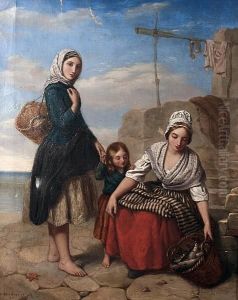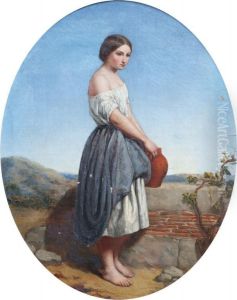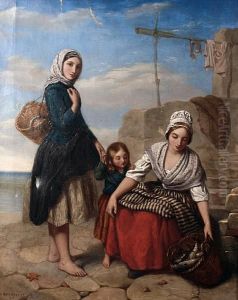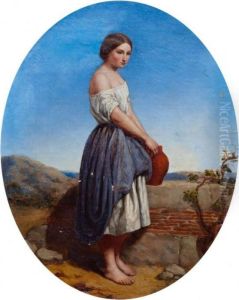Urbain Bouvier Paintings
Urbain Bouvier was a French painter and illustrator, born in 1843 in Montivilliers, in the Seine-Maritime department of Normandy, France. He was recognized for his genre scenes, portraits, and landscapes, which were influenced by the Barbizon school—a mid-19th-century French art movement that emphasized naturalistic and pastoral scenes. Bouvier's works often depicted rural French life, showing a keen interest in the lives of peasants and the beauty of the countryside.
Educated at the École des Beaux-Arts in Paris, Bouvier studied under influential teachers such as Alexandre Cabanel, a prominent French academic painter. Throughout his career, Bouvier exhibited at the Paris Salon, the official art exhibition of the Académie des Beaux-Arts in Paris. His work was well received, and he gained a reputation for his detailed and sensitive portrayal of everyday life.
While Bouvier's art did not radically break from tradition, his work was part of the larger shifts in French painting at the time, as artists moved away from the formalism of the academy and towards a more naturalistic and personal approach to subject matter. He captured the changing rhythms of rural life at a time when France was undergoing significant transformation due to industrialization and urbanization.
Bouvier's legacy is modest compared to the leading artists of his time, and he did not attain the fame of some of his contemporaries. Nevertheless, his paintings remain appreciated for their charming depiction of 19th-century French life and for their contribution to the genre of landscape and rural portraiture. Urbain Bouvier passed away in 1901, leaving behind a body of work that continues to be of interest to those studying French art of the period.



